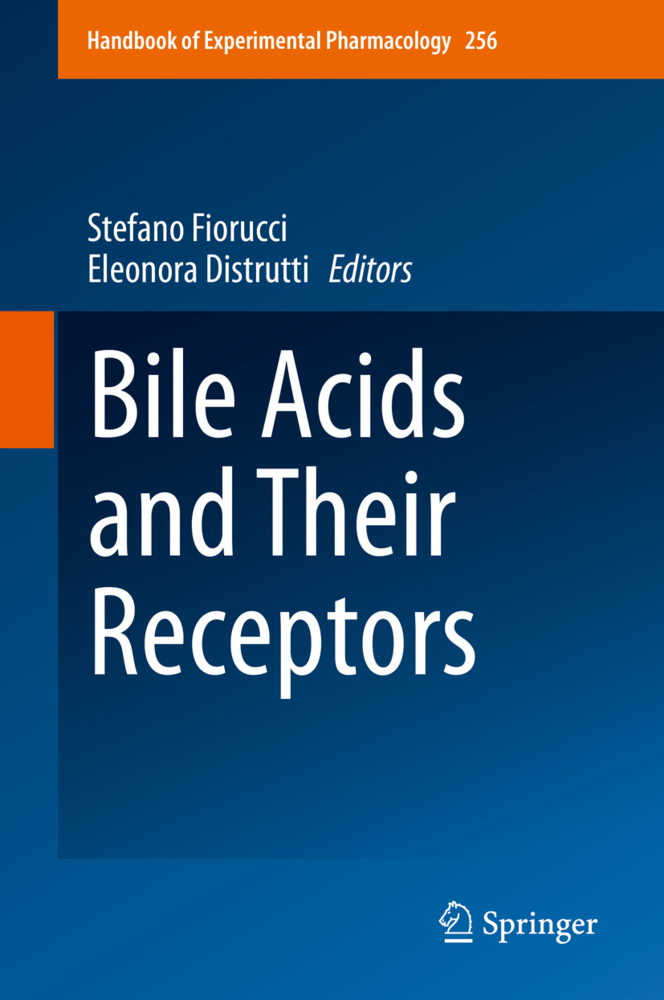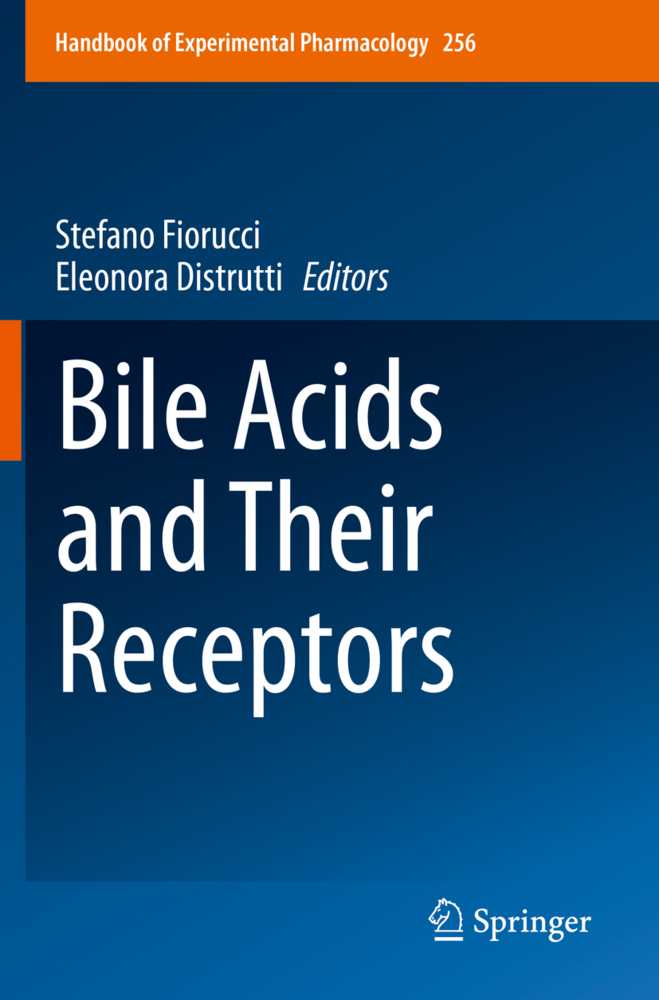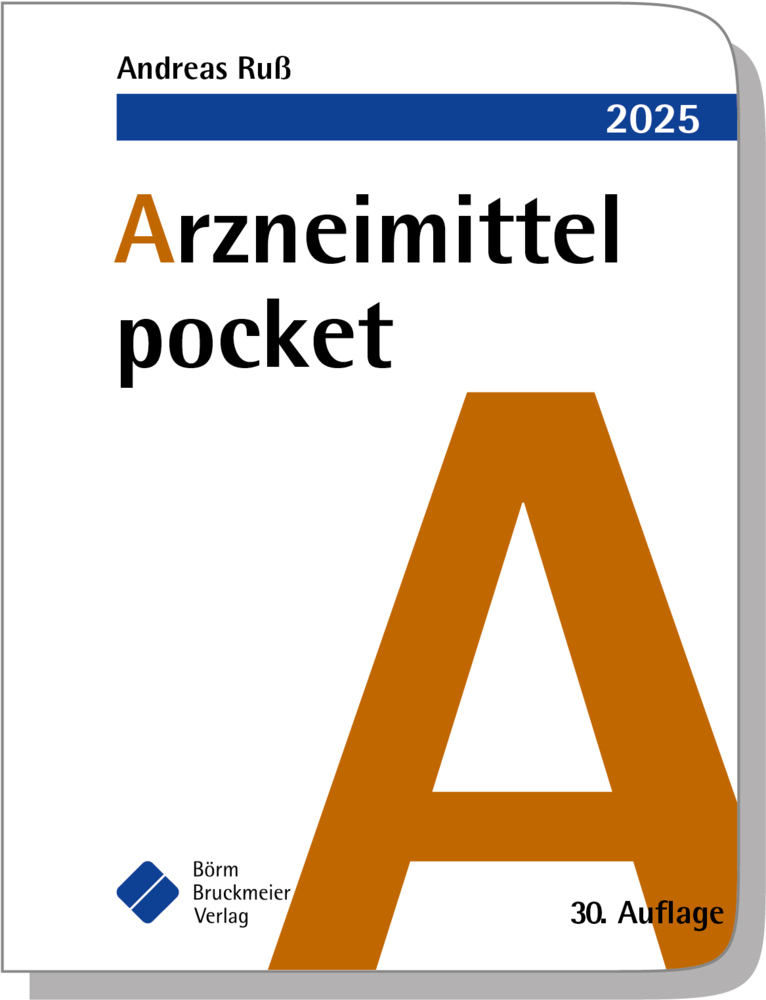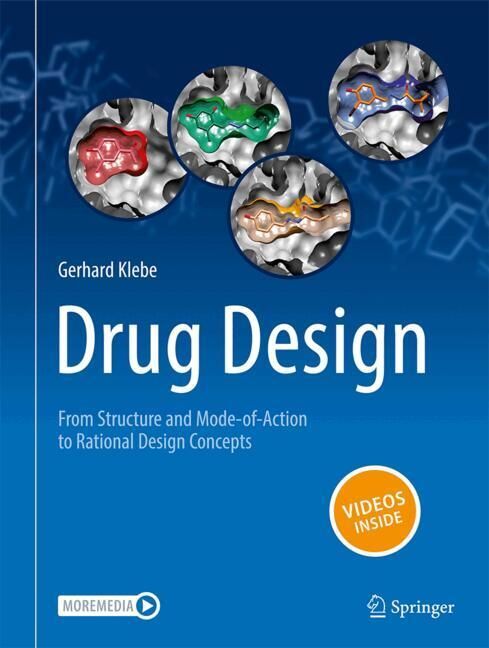This book focusses on the latest results related to the field of bile acids as signaling molecules and describes how these receptors have become a major pharmacological target. It covers all major areas of research in this field, from genetics, chemistry, in silico modeling, molecular biology to clinical applications, offering a cross-country view of the functional role of bile acids as signaling molecules, virtually acting on all major areas of metabolism. While FXR and GPBAR1 are essential bile acid sensors that integrate the de novo bile acid synthesis with intestinal microbiota and liver metabolism, in a broader sense, BARs play a pathogenic role in the development of common human alignments including liver, intestinal and metabolic disorders, such as steatosis (NAFLD) and steato-hepatitis (NASH), diabetes, obesity and atherosclerosis.
1. A short history of bile acid pharmacology
2. Bile acids activated receptors: a review of GPBAR1 (TGR5) and other G-protein-coupled receptors
3. Bile acid activated receptors: a review of FXR and other Nuclear receptors
4. The intestinal enterokine fibroblast growth factor 15/19 in bile acid metabolism
5. Signaling from intestine to the host. How bile acids regulate intestinal and liver immunity
Part 2. General pharmacology of bile acid activated receptors and their ligands
6. Modeling of bile acid activated receptors as a tool for pharmacological development
7. Chemistry and pharmacology of GPBAR1 and FXR selective agonists, dual agonists and antagonists
8. Non steroidal FXR ligands: current status and clinical applications
9. Intestinal selective FXR agonists and their potential in treating liver and metabolic diseases
Part 3. Bile acids and their derivatives as drugs
10. UDCA, Nor-UDCA and T-UDCA: a review of their mechanisms of action and clinical applications
11. Chenodeoxycholic acid: an update on its therapeutic appplications and safety profile
12. Obeticholic acid: a review of its mechanisms of action and clinical applications
Part 4. Bile acid activated receptors as therapeutic targets
13. Targeting FXR in cholestasis
14. FXR agonists for the treatment of NASH and other metabolic disorders
15. Targeting bile acids activated receptors in bariatric surgery.
Preface
Part 1. Bile acids as signaling molecules and their receptors1. A short history of bile acid pharmacology
2. Bile acids activated receptors: a review of GPBAR1 (TGR5) and other G-protein-coupled receptors
3. Bile acid activated receptors: a review of FXR and other Nuclear receptors
4. The intestinal enterokine fibroblast growth factor 15/19 in bile acid metabolism
5. Signaling from intestine to the host. How bile acids regulate intestinal and liver immunity
Part 2. General pharmacology of bile acid activated receptors and their ligands
6. Modeling of bile acid activated receptors as a tool for pharmacological development
7. Chemistry and pharmacology of GPBAR1 and FXR selective agonists, dual agonists and antagonists
8. Non steroidal FXR ligands: current status and clinical applications
9. Intestinal selective FXR agonists and their potential in treating liver and metabolic diseases
Part 3. Bile acids and their derivatives as drugs
10. UDCA, Nor-UDCA and T-UDCA: a review of their mechanisms of action and clinical applications
11. Chenodeoxycholic acid: an update on its therapeutic appplications and safety profile
12. Obeticholic acid: a review of its mechanisms of action and clinical applications
Part 4. Bile acid activated receptors as therapeutic targets
13. Targeting FXR in cholestasis
14. FXR agonists for the treatment of NASH and other metabolic disorders
15. Targeting bile acids activated receptors in bariatric surgery.
Fiorucci, Stefano
Distrutti, Eleonora
| ISBN | 978-3-030-22004-4 |
|---|---|
| Artikelnummer | 9783030220044 |
| Medientyp | Buch |
| Auflage | 1st ed. 2019 |
| Copyrightjahr | 2019 |
| Verlag | Springer, Berlin |
| Umfang | X, 378 Seiten |
| Abbildungen | X, 378 p. 57 illus., 37 illus. in color. |
| Sprache | Englisch |










